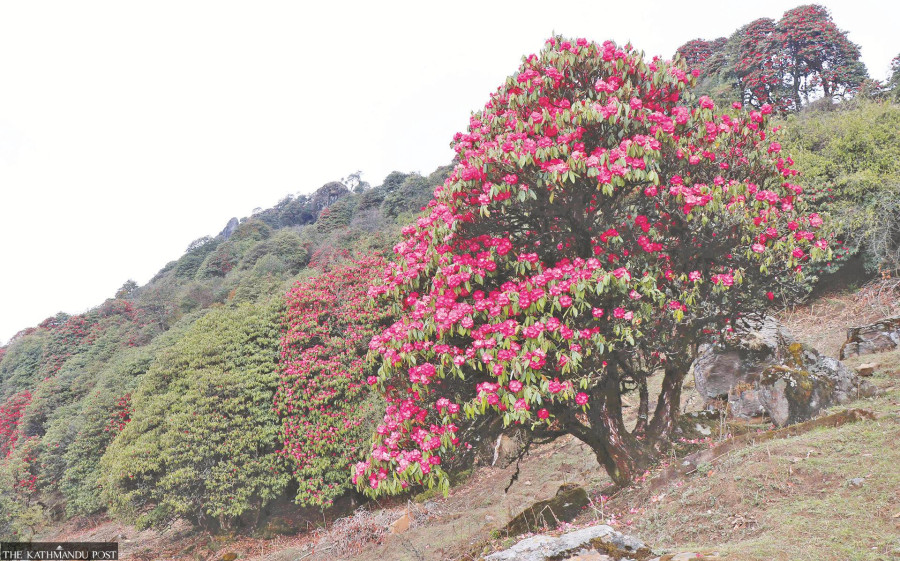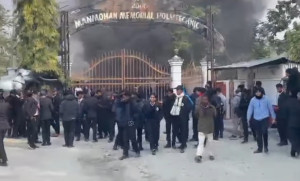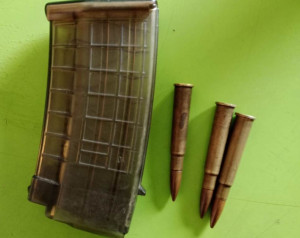Koshi Province
Teenjure-Milke-Jaljale losing rhododendron forests
Construction of roads, transmission lines and infrastructures, rampant use of forest products and overgrazing are threat to rhododendron conservation.
Chandra Karki
Local people and other stakeholders are worried about the depletion of rhododendron forests in the TMJ area (a collective name for Teenjure, Milke and Jaljale) spread over three districts of Province 1—Tehrathum, Sankhuwasabha and Taplejung.
“The once dense rhododendron forests are depleting and shrinking every year. Some species of rhododendron are going to be extinct soon unless the forests are not preserved effectively,” said Bidur Lingthep, the former mayor of Madi Municipality of Sankhuwasabha which lies in the TMJ area. “The locals and the authorities concerned should work together to preserve the forests.”
The TMJ region, which is also known as the ‘rhododendron capital’ of the country, was declared a rhododendron conservation area in 1998. According to conservationists, 31 different species of rhododendron are found in the region. The species called Rhododendron arboreum is Nepal’s national flower.
The vast rhododendron forests, which spread across 8,874 hectares of land in the TMJ area, have been depleting mainly due to the construction of roads, transmission lines and other infrastructures; overgrazing; rampant use of forest products for firewood and other household works and breaking of twigs while haphazardly plucking flowers to make juice.
Bharat Babu Shrestha, forest officer at the Division Forest Office in Tehrathum, said that various rhododendron species are on the verge of extinction due to unchecked deforestation in the TMJ region.
“Efforts are underway to conserve the forests but they are not enough. All three levels of government and the local people should work hand in hand for forest conservation,” said Shrestha. He further said that climate change has posed another challenge to the conservation of rhododendron forests. According to Shrestha, the division forest office is launching awareness programmes in all three districts on the importance of preserving rhododendron forests.
The local people have for generations been using the rhododendron forests for fuel. They cut down trees and their branches for firewood and other household uses.
“The local people use rhododendron flowers, leaves and twigs for medicinal purposes. Rhododendron flowers are used for the treatment of anaemia, bleeding, and diabetes, among other diseases. Rhododendron blossoms are increasingly being used to make juice, jam and wine,” said Indra Bahadur Khadka of Laligurans Municipality-1 in Tehrathum.
Conservationists and forest users complain that the local, provincial and the federal governments do not consider the conservation of rhododendron forests while carrying out development projects.
“Several roads are being opened through the forest area which stands to threaten the conservation of rhododendrons. The government authorities do not pay heed to forest conservation while making plans and carrying out development activities,” said Tulasi Sangraula, Province 1 chairman of the Federation of Community Forestry Users Nepal. “Various awareness programmes have been launched urging people to conserve forests. However, the consumption of rhododendron flowers and other parts of the trees remains the same.”
To control the depletion of rhododendron forests across the nation, the federal government formulated a five-year rhododendron conservation action plan starting from the fiscal year 2017-18. According to the plan, authorities have to identify rhododendron habitats, manage pastures and plant rhododendron saplings in forest areas within five years. The action plan also aims to encourage villagers to use improved cooking stoves and promote alternative energy sources. However, the plan has not been implemented effectively in the TMJ region, stakeholders say.
According to the Department of Forest Research and Survey, various species of rhododendron thrive in 691,596 hectares of forestland across the country.




 5.3200000000001°C Kathmandu
5.3200000000001°C Kathmandu















